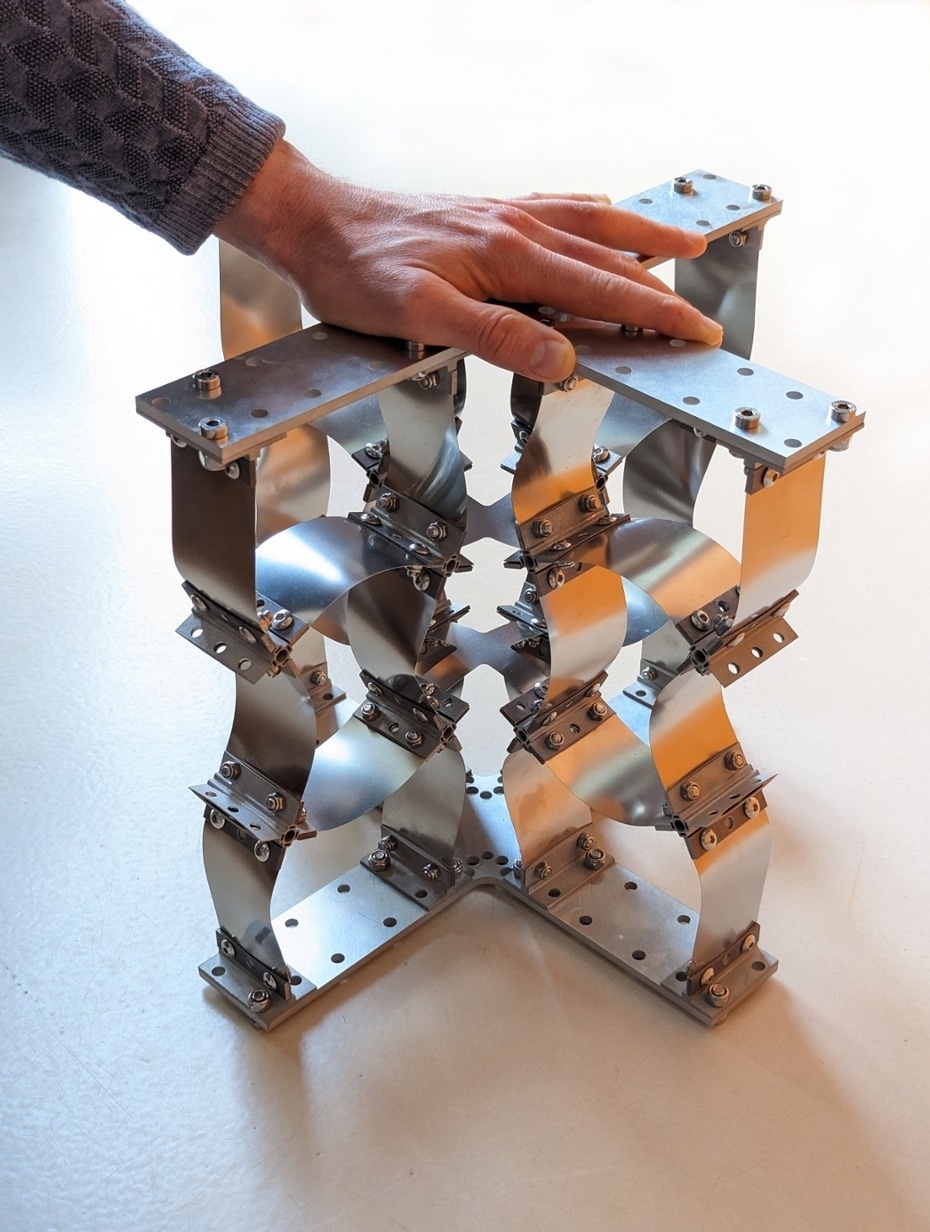Most people would prefer a mattress to a brick wall as a brick wall is rigid and does not absorb shocks or vibrations well, whereas a mattress is soft and works well as a shock absorber.
 A buckled material that is both stiff and good at absorbing vibrations. Image Credit: D. Dykstra et al.
A buckled material that is both stiff and good at absorbing vibrations. Image Credit: D. Dykstra et al.
However, both of these qualities are sometimes required when creating materials. Materials should absorb vibrations well while being stiff enough not to collapse under pressure. A team of researchers from the University of Amsterdam’s Institute of Physics has now discovered a way to create materials that can possess each of these qualities.
Typically, a material’s two characteristics are mutually exclusive: it is either stiff or absorbs vibrations well—but rarely both. However, materials that are both rigid and absorb vibrations would have a plethora of potential applications ranging from nano-scale design to aerospace engineering.
Buckling Does the Trick
A group of researchers from the University of Amsterdam has now discovered a way to make materials that are stiff but still absorb vibrations—and, more significantly, can be kept incredibly light-weight.
We discovered that the trick was to use materials that buckle, like thin metal sheets. When put together in a clever way, constructions made out of such buckled sheets become great absorbers of vibrations—but at the same time, they preserve a lot of the stiffness of the material they are made out of. Moreover, the sheets do not need to be very thick, and so the material can be kept relatively light.
David Dykstra, Study Lead Author, University of Amsterdam
A Host of Applications
The investigators extensively researched the properties of these buckled materials and discovered that they all demonstrated this magical combination of stiffness and the ability to dissipate vibrations.
Because known materials lack the desired combination of properties, the new lab-made materials (or metamaterials) have a wide range of possible applications at a wide range of sizes. The possible applications vary from meter-sized (aerospace, automotive, and many other civil designs) to microscale (applications like microscopes or nanolithography).
Humans like to build things—small things and big things—and we almost always want these structures to be light. If that can be done with materials that are both stiff and good at shock-absorbing, many existing designs can be improved and many new designs become possible. There really is no end to the possible applications!
David Dykstra, Study Lead Author, University of Amsterdam
Buckle up! A new class of materials is here
A rubber metamaterial sample with a mass on top is subjected to excitations: first with increasing frequencies and then with decreasing frequencies. When subjected to a large excitation, the sample buckles. Buckling is more pronounced with a decreasing frequency. Video Credit: University of Amsterdam.
Buckle up! A new class of materials is here
A metal metamaterial sample with a mass on top is subjected to excitations: first with increasing frequencies and then with decreasing frequency. When subjected to a large excitation, the sample buckles. Buckling is more pronounced with a decreasing frequency. Video Credit: University of Amsterdam.
Journal Reference:
Dykstra, D. M. J., et al. (2023). Buckling Metamaterials for Extreme Vibration Damping. Advanced Materials. doi.org/10.1002/adma.202301747.